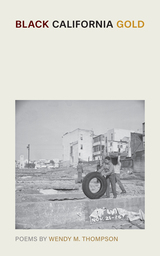658 start with H start with H
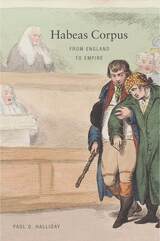
We call habeas corpus the Great Writ of Liberty. But it was actually a writ of power. In a work based on an unprecedented study of thousands of cases across more than five hundred years, Paul Halliday provides a sweeping revisionist account of the world’s most revered legal device.
In the decades around 1600, English judges used ideas about royal power to empower themselves to protect the king’s subjects. The key was not the prisoner’s “right” to “liberty”—these are modern idioms—but the possible wrongs committed by a jailer or anyone who ordered a prisoner detained. This focus on wrongs gave the writ the force necessary to protect ideas about rights as they developed outside of law. This judicial power carried the writ across the world, from Quebec to Bengal. Paradoxically, the representative impulse, most often expressed through legislative action, did more to undermine the writ than anything else. And the need to control imperial subjects would increasingly constrain judges. The imperial experience is thus crucial for making sense of the broader sweep of the writ’s history and of English law.
Halliday’s work informed the 2008 U.S. Supreme Court ruling in Boumediene v. Bush on prisoners in the Guantánamo detention camps. His eagerly anticipated book is certain to be acclaimed the definitive history of habeas corpus.
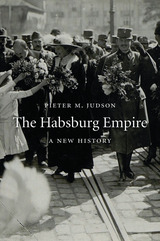
A EuropeNow Editor’s Pick
A Choice Outstanding Academic Title of the Year
“Pieter M. Judson’s book informs and stimulates. If his account of Habsburg achievements, especially in the 18th century, is rather starry-eyed, it is a welcome corrective to the black legend usually presented. Lucid, elegant, full of surprising and illuminating details, it can be warmly recommended to anyone with an interest in modern European history.”
—Tim Blanning, Wall Street Journal
“This is an engaging reappraisal of the empire whose legacy, a century after its collapse in 1918, still resonates across the nation-states that replaced it in central Europe. Judson rejects conventional depictions of the Habsburg empire as a hopelessly dysfunctional assemblage of squabbling nationalities and stresses its achievements in law, administration, science and the arts.”
—Tony Barber, Financial Times
“Spectacularly revisionist… Judson argues that…the empire was a force for progress and modernity… This is a bold and refreshing book… Judson does much to destroy the picture of an ossified regime and state.”
—A. W. Purdue, Times Higher Education
“Judson’s reflections on nations, states and institutions are of broader interest, not least in the current debate on the future of the European Union after Brexit.”
—Annabelle Chapman, Prospect
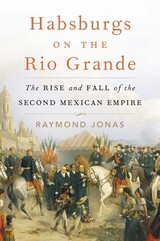
The story of how nineteenth-century European rulers conspired with Mexican conservatives in an outlandish plan to contain the rising US colossus by establishing Old World empire on its doorstep.
The outbreak of the US Civil War provided an unexpected opportunity for political conservatives across continents. On one side were European monarchs. Mere decades after its founding, the United States had become a threat to European hegemony; instability in the United States could be exploited to lay a rival low. Meanwhile, Mexican antidemocrats needed a powerful backer to fend off the republicanism of Benito Juárez. When these two groups found each other, the Second Mexican Empire was born.
Raymond Jonas argues that the Second Mexican Empire, often dismissed as a historical sideshow, is critical to appreciating the globally destabilizing effect of growing US power in the nineteenth century. In 1862, at the behest of Mexican reactionaries and with the initial support of Spain and Britain, Napoleon III of France sent troops into Mexico and installed Austrian archduke Ferdinand Maximilian as an imperial ruler who could resist democracy in North America. But what was supposed to be an easy victory proved a disaster. The French army was routed at the Battle of Puebla, and for the next four years, republican guerrillas bled the would-be empire. When the US Civil War ended, African American troops were dispatched to Mexico to hasten the French withdrawal.
Based on research in five languages and in archives across the globe, Habsburgs on the Rio Grande fundamentally revises narratives of global history. Far more than a footnote, the Second Mexican Empire was at the center of world-historic great-power struggles—a point of inflection in a contest for supremacy that set the terms of twentieth-century rivalry.
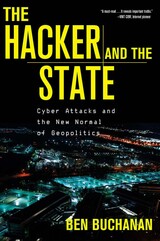
“A must-read…It reveals important truths.”
—Vint Cerf, Internet pioneer
“One of the finest books on information security published so far in this century—easily accessible, tightly argued, superbly well-sourced, intimidatingly perceptive.”
—Thomas Rid, author of Active Measures
Cyber attacks are less destructive than we thought they would be—but they are more pervasive, and much harder to prevent. With little fanfare and only occasional scrutiny, they target our banks, our tech and health systems, our democracy, and impact every aspect of our lives. Packed with insider information based on interviews with key players in defense and cyber security, declassified files, and forensic analysis of company reports, The Hacker and the State explores the real geopolitical competition of the digital age and reveals little-known details of how China, Russia, North Korea, Britain, and the United States hack one another in a relentless struggle for dominance. It moves deftly from underseas cable taps to underground nuclear sabotage, from blackouts and data breaches to election interference and billion-dollar heists.
Ben Buchanan brings to life this continuous cycle of espionage and deception, attack and counterattack, destabilization and retaliation. Quietly, insidiously, cyber attacks have reshaped our national-security priorities and transformed spycraft and statecraft. The United States and its allies can no longer dominate the way they once did. From now on, the nation that hacks best will triumph.
“A helpful reminder…of the sheer diligence and seriousness of purpose exhibited by the Russians in their mission.”
—Jonathan Freedland, New York Review of Books
“The best examination I have read of how increasingly dramatic developments in cyberspace are defining the ‘new normal’ of geopolitics in the digital age.”
—General David Petraeus, former Director of the CIA
“Fundamentally changes the way we think about cyber operations from ‘war’ to something of significant import that is not war—what Buchanan refers to as ‘real geopolitical competition.’”
—Richard Harknett, former Scholar-in-Residence at United States Cyber Command

A double is haunting the world--the double of abstraction, the virtual reality of information, programming or poetry, math or music, curves or colorings upon which the fortunes of states and armies, companies and communities now depend. The bold aim of this book is to make manifest the origins, purpose, and interests of the emerging class responsible for making this new world--for producing the new concepts, new perceptions, and new sensations out of the stuff of raw data.
A Hacker Manifesto deftly defines the fraught territory between the ever more strident demands by drug and media companies for protection of their patents and copyrights and the pervasive popular culture of file sharing and pirating. This vexed ground, the realm of so-called "intellectual property," gives rise to a whole new kind of class conflict, one that pits the creators of information--the hacker class of researchers and authors, artists and biologists, chemists and musicians, philosophers and programmers--against a possessing class who would monopolize what the hacker produces.
Drawing in equal measure on Guy Debord and Gilles Deleuze, A Hacker Manifesto offers a systematic restatement of Marxist thought for the age of cyberspace and globalization. In the widespread revolt against commodified information, McKenzie Wark sees a utopian promise, beyond the property form, and a new progressive class, the hacker class, who voice a shared interest in a new information commons.

Even in the panoply of Roman history, Hadrian stands out. Emperor from 117 to 138 ad, he was at once a benevolent ruler and a ruthless military leader, known for his restless and ambitious nature, his interest in architecture, and his passion for Greek culture. This book moves beyond the familiar image of Hadrian to offer a new appraisal of this Emperor’s contradictory personality, his exploits and accomplishments, his rule, and his military role, against the backdrop of his twenty-one-year reign.
Lavishly illustrated with key works of art and objects, celebrated and little-known sculptures, bronzes, coins and medals, drawings, and watercolors from museums around the globe, the book conveys a vivid sense of the world Hadrian inhabited. Thorsten Opper shows the emperor from many angles—as a complex individual, as a military leader and strategist, as the amateur architect who created magnificent buildings such as his villa at Tivoli (an empire in miniature), as the lover who deified his male lover Antinous after his mysterious death in the Nile, and, finally, as the traveler who tirelessly roamed his empire and its boundaries.
From his place in Roman history to his legacy, which even makes its way into the popular culture of our day, the Hadrian who emerges from these pages is no longer larger than life; rather, he has all the depth and complexity, the color and shadings and detail of life itself.

The Hajj, one of the five pillars of Islam, is the largest pilgrimage in the world today and a sacred duty for all Muslims. Each year, millions of the faithful from around the world make the pilgrimage to Makkah, the birthplace of Islam where the Prophet Muhammad received his revelation.
With contributions from renowned experts Muhammad Abdel Haleem, Hugh Kennedy, Robert Irwin, and Ziauddin Sardar, this fascinating book pulls together many strands of Hajj, its rituals, history, and modern manifestations. Travel was once a hazardous gamble, yet devoted Muslims undertook the journey to Makkah, documenting their experiences in manuscripts, wall paintings, and early photographs, many of which are presented here. Through a wealth of illustrations including pilgrims' personal objects, souvenirs, and maps, Hajj provides a glimpse into this important holy rite for Muslim readers already grounded in the tradition and non-Muslims who cannot otherwise participate.
Hajj does not, however, merely trace pilgrimages of the past. The Hajj is a living tradition, influenced by new conveniences and obstacles. Graffiti, consumerism, and state lotteries all now play a role in this time-honored practice. This book opens out onto the full sweep of the Hajj: a sacred path walked by early Islamic devotees and pre-Islamic Arabians; a sumptuous site of worship under the care of sultans; and an expression of faith in the modern world.

The turn of the third century CE—known as the Jian’an era or Three Kingdoms period—holds double significance for the Chinese cultural tradition. Its writings laid the foundation of classical poetry and literary criticism. Its historical personages and events have also inspired works of poetry, fiction, drama, film, and art throughout Chinese history, including Internet fantasy literature today. There is a vast body of secondary literature on these two subjects individually, but very little on their interface.
The image of the Jian’an era, with its feasting, drinking, heroism, and literary panache, as well as intense male friendship, was to return time and again in the romanticized narrative of the Three Kingdoms. How did Jian’an bifurcate into two distinct nostalgias, one of which was the first paradigmatic embodiment of wen (literary graces, cultural patterning), and the other of wu (heroic martial virtue)? How did these largely segregated nostalgias negotiate with one another? And how is the predominantly male world of the Three Kingdoms appropriated by young women in contemporary China? The Halberd at Red Cliff investigates how these associations were closely related in their complex origins and then came to be divergent in their later metamorphoses.

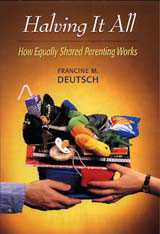
The best way to have it all--both a full family life and a career--is to halve it all. That's the message of Francine Deutsch's refreshing and humane book, based on extensive interviews with a wide range of couples. Deutsch casts a skeptical eye on the grim story of inequality that has been told since women found themselves working a second shift at home. She brings good news: equality based on shared parenting is possible, and it is emerging all around us. Some white-collar fathers achieve as well as talk about equality, and some blue-collar parents work alternate shifts to ensure that one parent can always be with the children.
Using vivid quotations from her interviews, Deutsch tells the story of couples who share parenting equally, and some who don't. The differences between the groups are not in politics, education, or class, but in the way they negotiate the large and small issues--from whose paid job is "important" to who applies the sunscreen. With the majority of mothers in the workforce, parents today have to find ways of sharing the work at home. Rigid ideas of "good mothers" and "good fathers," Deutsch argues, can be transformed into a more flexible reality: the good parent.
Halving It All takes the discussion beyond shrill ideological arguments about working mothers and absent fathers. Deutsch shows how, with the best of intentions, people perpetuate inequalities and injustices on the home front, but also, and more important, how they can devise more equal arrangements, out of explicit principles, or simply out of fairness and love.








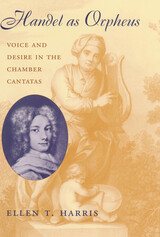
Handel wrote over 100 cantatas, compositions for voice and instruments that describe the joy and pain of love. In Handel as Orpheus, the first comprehensive study of the cantatas, Ellen Harris investigates their place in Handel's life as well as their extraordinary beauty.
The cantatas were written between 1706 and 1723--from the time Handel left his home in Germany, through the years he spent in Florence and Rome, and into the early part of his London career. In this period he lived as a guest in aristocratic homes, and composed these chamber works for his patrons and hosts, primarily for private entertainments. In both Italy and England his patrons moved in circles in which same-sex desire was commonplace--a fact that is not without significance, Harris reveals, for the cantatas exhibit a clear homosexual subtext.
Addressing questions about style and form, dating, the relation of music to text, rhythmic and tonal devices, and voicing, Handel as Orpheus is an invaluable resource for the study and enjoyment of the cantatas, which have too long been neglected. This innovative study brings greater understanding of Handel, especially his development as a composer, and new insight into the role of sexuality in artistic expression.


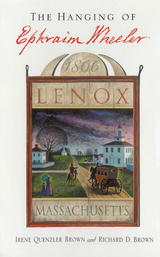
In 1806 an anxious crowd of thousands descended upon Lenox, Massachusetts, for the public hanging of Ephraim Wheeler, condemned for the rape of his thirteen-year-old daughter, Betsy. Not all witnesses believed justice had triumphed. The death penalty had become controversial; no one had been executed for rape in Massachusetts in more than a quarter century. Wheeler maintained his innocence. Over one hundred local citizens petitioned for his pardon--including, most remarkably, Betsy and her mother.
Impoverished, illiterate, a failed farmer who married into a mixed-race family and clashed routinely with his wife, Wheeler existed on the margins of society. Using the trial report to reconstruct the tragic crime and drawing on Wheeler's jailhouse autobiography to unravel his troubled family history, Irene Quenzler Brown and Richard D. Brown illuminate a rarely seen slice of early America. They imaginatively and sensitively explore issues of family violence, poverty, gender, race and class, religion, and capital punishment, revealing similarities between death penalty politics in America today and two hundred years ago.
Beautifully crafted, engagingly written, this unforgettable story probes deeply held beliefs about morality and about the nature of justice.

For nearly a decade the leaders of the seven major industrial countries—the United States, Japan, Germany, France, Britain, Italy, and Canada—have met annually to discuss international economic and political issues. Regular summitry of this sort is virtually unprecedented in modern diplomacy. Proponents see the Western summits as providing collective leadership that is vital in a turbulent world, while critics dismiss summitry as distracting and even damaging to political and economic stability.
Hanging Together charts the modern dilemma between economic interdependence and national sovereignty. It assesses the history, decisions, successes, and failures of the seven-power summits from Rambouillet in 1975 to the 1983 meeting at Williamsburg, and looks forward to the 1984 summit in London. The authors show how the growing importance of international commerce and finance has caused national and international politics to become entangled, and how national borders have become more permeable. Born in an era of waning American hegemony, the summits reveal the tension between American leadership and collective Western management of the world economy. The authors also trace the struggles of heads of state to balance the conflicting imperatives of personal authority and bureaucratic expertise. Because summits involve the power and prestige of each country's highest authorities, summitry reveals in concentrated form how these conflicts are expressed and managed.
As a blend of contemporary history and political economy, Hanging Together demonstrates that summits are not isolated annual encounters, but part of a continuous process of international and domestic negotiation about the most important and controversial issues facing all governments today.

For nearly a decade the leaders of the seven major industrial countries—the United States, Japan, Germany, France, Britain, Italy, and Canada—have met annually to discuss international economic and political issues. Regular summitry of this sort is virtually unprecedented in modern diplomacy. Proponents see the Western summits as providing collective leadership that is vital in a turbulent world, while critics dismiss summitry as distracting and even damaging to political and economic stability.
Hanging Together charts the modern dilemma between economic interdependence and national sovereignty. It assesses the history, decisions, successes, and failures of the seven-power summits from Rambouillet in 1975 to the 1983 meeting at Williamsburg, and looks forward to the 1984 summit in London. The authors show how the growing importance of international commerce and finance has caused national and international politics to become entangled, and how national borders have become more permeable. Born in an era of waning American hegemony, the summits reveal the tension between American leadership and collective Western management of the world economy. The authors also trace the struggles of heads of state to balance the conflicting imperatives of personal authority and bureaucratic expertise. Because summits involve the power and prestige of each country's highest authorities, summitry reveals in concentrated form how these conflicts are expressed and managed.
As a blend of contemporary history and political economy, Hanging Together demonstrates that summits are not isolated annual encounters, but part of a continuous process of international and domestic negotiation about the most important and controversial issues facing all governments today.
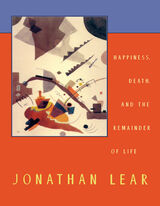
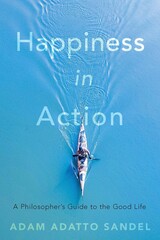
“Here, at last, is a book about what happiness really means, and why it often eludes us in our stressed-out, always-on lives.”
—Arianna Huffington, Founder and CEO, Thrive
A young philosopher and Guinness World Record holder in pull-ups argues that the key to happiness is not goal-driven striving but forging a life that integrates self-possession, friendship, and engagement with nature.
What is the meaning of the good life? In this strikingly original book, Adam Adatto Sandel draws on ancient and modern thinkers and on two seemingly disparate pursuits of his own, philosophy and fitness, to offer a surprising answer to this age-old human question.
Sandel argues that finding fulfillment is not about attaining happiness, conceived as a state of mind, or even about accomplishing one’s greatest goals. Instead, true happiness comes from immersing oneself in activity that is intrinsically rewarding. The source of meaning, he suggests, derives from the integrity or “wholeness” of self that we forge throughout the journey of life.
At the heart of Sandel’s account of life as a journey are three virtues that get displaced and distorted by our goal-oriented striving: self-possession, friendship, and engagement with nature. Sandel offers illuminating and counterintuitive accounts of these virtues, revealing how they are essential to a happiness that lasts.
To illustrate the struggle of living up to these virtues, Sandel looks to literature, film, and television, and also to his own commitments and adventures. A focal point of his personal narrative is a passion that, at first glance, is as narrow a goal-oriented pursuit as one can imagine: training to set the Guinness World Record for Most Pull-Ups in One Minute. Drawing on his own experiences, Sandel makes philosophy accessible for readers who, in their own infinitely various ways, struggle with the tension between goal-oriented striving and the embrace of life as a journey.



The art and artists of Harlem: Found Ways represent the place and its people, burnishing Harlem’s luster but never attempting to smooth its rough edges. The works in the exhibition span a variety of media to explore the invention of Harlem and, at the same time, reinvent it. Artists in the exhibition Harlem: Found Ways, at the Ethelbert Cooper Gallery of African & African American Art in Cambridge, MA, from 24 May to 15 July, 2017, included Dawoud Bey, Abigail DeVille, Glenn Ligon, Howard Tangye, Nari Ward, and Kehinde Wiley. The exhibition also included items from the Harlem Postcards project at The Studio Museum in Harlem.
This catalog features essays, including a foreword by Henry Louis Gates, Jr., that contemplate the uniquely layered urban landscape of Harlem, a city within a city. Vibrantly illustrated with objects from the exhibition, the catalog itself is an important resource for students of contemporary African American art and of the city.

In this ground-breaking collection of literary biographies, many with pictures, authors Lorraine Elena Roses and Ruth Elizabeth Randolph chronicle the lives and works of 100 black women novelists, short-story writers, playwrights, poets, essayists, critics, historians, journalists, and editors writing in the United States between 1900 and 1945.
Here are insightful portraits of famous black women, among them Zora Neale Hurston, Katherine Dunham, Angelina Weld Grimké, Mary Eliza Church Terrell, and Ida Bell Wells-Barnett. Here, too, are many thoughtful profiles of neglected writers--their works deserving to be rescued from obscurity. Drawing on extensive archival research and interviews with the writers and their families, The Harlem Renaissance and Beyond traces its subjects' contributions to literature, their concerns about race and gender, their common themes, their relationships with artistic contemporaries, and the influence of these early writers on their modern-day counterparts in American literature.

It wasn’t all black or white. It wasn’t a vogue. It wasn’t a failure. By restoring interracial dimensions left out of accounts of the Harlem Renaissance—or blamed for corrupting it—George Hutchinson transforms our understanding of black (and white) literary modernism, interracial literary relations, and twentieth-century cultural nationalism in the United States.
What has been missing from literary histories of the time is a broader sense of the intellectual context of the Harlem Renaissance, and Hutchinson supplies that here: Boas’s anthropology, Park’s sociology, various strands of pragmatism and cultural nationalism—ideas that shaped the New Negro movement and the literary field, where the movement flourished. Hutchinson tracks the resulting transformation of literary institutions and organizations in the 1920s, offering a detailed account of the journals and presses, black and white, that published the work of the “New Negroes.” This cultural excavation discredits bedrock assumptions about the motives of white interest in the renaissance, and about black relationships to white intellectuals of the period. It also allows a more careful investigation than ever before of the tensions among black intellectuals of the 1920s. Hutchinson’s analysis shows that the general expansion of literature and the vogue of writing cannot be divorced from the explosion of black literature often attributed to the vogue of the New Negro—any more than the growing sense of “Negro” national consciousness can be divorced from expanding articulations and permutations of American nationality. The book concludes with the first full-scale interpretation of the landmark anthology The New Negro.
A courageous work that exposes the oversimplifications and misrepresentations of popular readings of the Harlem Renaissance, this book reveals the truly composite nature of American literary culture.

In poems, stories, memoirs, and essays about color and culture, prejudice and love, and feminine trials, dozens of African-American women writers--some famous, many just discovered--give us a sense of a distinct inner voice and an engagement with their larger double culture. Harlem's Glory unfolds a rich tradition of writing by African-American women, hitherto mostly hidden, in the first half of the twentieth century. In historical context, with special emphasis on matters of race and gender, are the words of luminaries like Zora Neale Hurston and Georgia Douglas Johnson as well as rare, previously unpublished writings by figures like Angelina Weld Grimké, Elise Johnson McDougald, and Regina Andrews, all culled from archives and arcane magazines.
Editors Lorraine Elena Roses and Ruth Elizabeth Randolph arrange their selections to reveal not just the little-suspected extent of black women's writing, but its prodigious existence beyond the cultural confines of New York City. Harlem's Glory also shows how literary creativity often coexisted with social activism in the works of African-American women.
This volume is full of surprises about the power and diversity of the writers and genres. The depth, the wit, and the reach of the selections are astonishing. With its wealth of discoveries and rediscoveries, and its new slant on the familiar, all elegantly presented and deftly edited, the book will compel a reassessment of writing by African-American women and its place in twentieth-century American literary and historical culture.


Every liberal democracy has laws or codes against hate speech—except the United States. For constitutionalists, regulation of hate speech violates the First Amendment and damages a free society. Against this absolutist view, Jeremy Waldron argues powerfully that hate speech should be regulated as part of our commitment to human dignity and to inclusion and respect for members of vulnerable minorities.
Causing offense—by depicting a religious leader as a terrorist in a newspaper cartoon, for example—is not the same as launching a libelous attack on a group’s dignity, according to Waldron, and it lies outside the reach of law. But defamation of a minority group, through hate speech, undermines a public good that can and should be protected: the basic assurance of inclusion in society for all members. A social environment polluted by anti-gay leaflets, Nazi banners, and burning crosses sends an implicit message to the targets of such hatred: your security is uncertain and you can expect to face humiliation and discrimination when you leave your home.
Free-speech advocates boast of despising what racists say but defending to the death their right to say it. Waldron finds this emphasis on intellectual resilience misguided and points instead to the threat hate speech poses to the lives, dignity, and reputations of minority members. Finding support for his view among philosophers of the Enlightenment, Waldron asks us to move beyond knee-jerk American exceptionalism in our debates over the serious consequences of hateful speech.

Very little has been written about Harold Ickes, one of the most important, complex, and colorful figures of the New Deal. By any standards his public career was remarkable. For thirteen turbulent years as Interior Secretary and as head of the Public Works Administration he was an uncommonly effective official and a widely acknowledged leader of liberal reform. As the foremost conservationist of his time, he saved millions of acres of land from decimation. He was matchless, too, as a fighter for just causes, and used his formidable talent for invective and his inexhaustible supply of moral fervor to flay representatives of prejudice and self-interest, whether in the cause of Negro rights or that of the common man against economic royalists.
Despite a long and distinguished public life, Ickes is an enigma because of his inability to control his rage, to temper his public criticism, to respond objectively to situations. At the heart of his public and private life was constant moral outrage. This astute study by a historian and a psychologist probes the sources and consequences of Ickes' abnormal combativeness.
White and Maze uncover the psychological imperatives and conscious ideals of Ickes' unknown private life that illuminate his public career. Some of the episodes include sadistic attacks by an elder brother; young Harold contemplating shooting his father; bitter and physical brawls with his imperious, wealthy, and previously married socialite wife, Anna Wilmarth Thompson of Chicago; and thoughts of suicide.
Richard Polenberg calls this book "Superb [and] one of the most informative and interesting I have read on the New Deal. The story shows Ickes' weaknesses and flaws, but it puts them in context. The authors have not tried to explain everything Ickes ever did wholly in psychological terms, but the particular insights they bring to bear help present a rounded view of the man. The book is beautifully written."

During America's longest crisis—the Great Depression and the Second World War—one man stood nearest to the president, almost as a partner: Harry Hopkins, trusted and loyal lieutenant and best friend of Franklin D. Roosevelt. From his work on the New Deal through his assignments during the war, Hopkins was the grand planner, expediter, adviser, and negotiator. Here is the first complete modern biography of this remarkable man, based on prodigious primary sources and written with the benefit of historical perspective.
George McJimsey fully records Hopkins's meteoric public career and probes the sources of his creativity and talent. Reared in Iowa with missionary values, he became a professional social worker in New York, pioneering strategies for several health and social service agencies. His special talent for persuasion and conciliation brought him into the New Deal, where as head of the Federal Emergency Relief Agency and the Public Works Administration he led Roosevelt's recovery programs—helping to pump billions of dollars into large projects and into tens of thousands of jobs without any political scandal or great conflict with conservative adversaries or competitors such as Harold Ickes. Later, as Secretary of Commerce, he continued to lead the country out of depression.
The coming of war tested Hopkins in new and unexpected ways. From being democracy's great bureaucrat he became the grand vizier of the arsenal of democracy. Living in the White House (in the Lincoln Room), Hopkins organized Lend-Lease, built the Anglo-American alliance, coordinated military supplies with strategic objectives, negotiated with Stalin, and helped to plan FDR's meetings with Churchill, Stalin, De Gaulle, and Chiang Kai-shek. Intelligent, humane, imaginative yet practical, always loyal to Roosevelt yet operating with his own creative independence, Hopkins played a role in winning the war and shaping the peace that provides an inspiring example of devoted public service. General readers and historians, journalists, and everyone interested in how government works will value and enjoy this book.
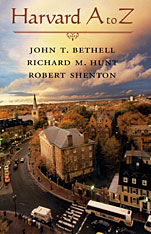
Open this book and step into the storied corridors of the nation’s oldest university; encounter the historic landmarks and curiosities; and among them, meet the famous dropouts and former students, the world-class scholars, eccentrics, and prodigies who have given the institution its incomparable character.
An alphabetical compendium of short but substantial essays about Harvard University—its undergraduate college and nine professional schools—this volume traverses the gamut of Harvardiana from Aab and Admissions to X Cage and Z Closet. In between are some two hundred entries written by three Harvard veterans who bring to the task over 125 years of experience within the university. The entries range from essential facts to no less interesting ephemera, from the Arnold Arboretum designed by Frederick Law Olmsted to the peculiar medical specimens of the Warren Museum; from Arts and Athletics to Towers and Tuition: from the very real environs (Cambridge, Charles River, and Quincy Street) to the Harvard of Hollywood and fiction.
Harvard A to Z is a browser’s delight, offering readers the chance to dip into the history and lore, the character and culture of America’s foremost institution of higher learning.


An incomparable guide to the thousands of characters, from humble artisan to lofty genius, who people the unfolding history of music, this volume brings together all the pertinent biographical information about composers, performers, music theorists, and instrument makers from the days of praise chants to the bop and pop of today. A long-awaited companion to The Harvard Dictionary of Music, and compiled with the same meticulous scholarship and delight in detail, this biographical dictionary emphasizes classical and art music, but also gives ample attention to jazz and blues, rock and pop, and hymns and show tunes across the ages—with unusual care devoted to coverage of the twentieth century.
That the Belgian composer Jean Absil was professor of fugue at the Brussels Conservatory is a little-known fact. And few are aware that Roy Acuff began his country-and-western career in medicine shows. The writings of the seventeenth-century organist Jakob Adlung may be obscure, while Theodor Adorno’s are widely read and studied. But they can all be found in the As, along with 218 more entries, from Herb Alpert and the Andrews Sisters to Carl Friedrich Abel and Emanuel Ax. And this is only the beginning.
Here then is the information you need about 5,500 figures in the world of music—the major, the minor, the famous, the nearly forgotten, from Bach and Beethoven to Irving Berlin, Benny Goodman, and Bruce Springsteen—capsule summaries of the lives and careers behind the music enjoyed in every era. The volume is enlivened with illustrations, some revelations in themselves. A compendium that no music lover should be without, this rich volume, along with The Harvard Dictionary of Music, constitutes the standard reference work for the musically inclined, the curious, the informed, and the expert.

Join Professor Helen Vendler in her course lecture on the Yeats poem "Among School Children". View her insightful and passionate analysis along with a condensed reading and student comments on the course.
The poetry collected in this volume reveals the range and power of the contemporary American imagination. The verve, freedom, and boldness of American English are combined with the new harmonies of modern cadence. Here are distillations of twentieth-century perception, feeling, and thought, and reflections of changing social realities, scientific and psychoanalytic insights, and the strong voices of feminism and black consciousness. This is a book for those who value fresh and original poetry and for readers worldwide who are curious about contemporary American experience.
Helen Vendler relies on her own taste and judgment in singling out excellent poems, beginning with the late modernist flowering of Wallace Stevens and continuing to the present. Her wide-ranging Introduction places recent American poetry in its aesthetic and social contexts. The anthology provides an extensive offering of the work of major poets and introduces many writers who are only now beginning to make their reputation. Thirty-five poets are included, with a representative selection from the earlier to later work of each and a significant number of long poems. Brief biographies of the poets are appended.


If Harvard can be said to have a literature all its own, then few universities can equal it in scope. Here lies the reason for this anthology—a collection of what Harvard men (teachers, students, graduates) have written about Harvard in the more than three centuries of its history. The emphasis is upon entertainment, upon readability; and the selections have been arranged to show something of the many variations of Harvard life.
For all Harvard men—and that part of the general public which is interested in American college life—here is a rich treasury. In such a Harvard collection one may expect to find the giants of Harvard’s last 75 years—Eliot, Lowell, and Conant—attempting a definition of what Harvard means. But there are many other familiar names—Henry Dunster, Oliver Wendell Holmes, James Russell Lowell, Henry Adams, Charles M. Flandrau, William and Henry James, Owen Wister, Thomas Wolfe, John P. Marquaud. Here is Mistress Eaton’s confession about the bad fish served to the wretched students of Harvard’s early years; here too is President Holyoke’s account of the burning of Harvard Hall; a student’s description of his trip to Portsmouth with that aged and Johnsonian character, Tutor Henry Flynt; Cleveland Amory’s retelling of the murder of Dr. George Parkman; Mayor Quiney’s story of what happened in Cambridge when Andrew Jackson came to get an honorary degree; Alistair Cooke’s commentary on the great Harvard–Yale cricket match of 1951. There are many sorts of Harvard men in this book—popular fellows like Hammersmith, snobs like Bertie and Billy, the sensitive and the lonely like Edwin Arlington Robinson and Thomas Wolfe, and independent thinkers like John Reed. Teachers and pupils, scholars and sports, heroes and rogues pass across the Harvard stage through the struggles and the tragedies to the moments of triumph like the Bicentennial or the visit of Winston Churchill.
And speaking of visits, there are the visitors too—the first impressions of Harvard set down by an assortment of travelers as various as Dickens, Trollope, Rupert Brooke, Harriet Martineau, and Francisco de Miranda, the “precursor of Latin American independence.”
For the Harvard addict this volume is indispensable. For the general reader it is the sort of book that goes with a good living-room fire or the blissful moments of early to bed.









Since its founding in 1839, the Harvard College Observatory has pioneered in the development of modern astronomy. Its first directors early recognized the potential of spectroscopy in revealing the constitution of the stars, and of photography in determining the positions and motions of celestial objects; the library of photographic plates made under their direction provides an invaluable history of the stellar universe for the period. The Observatory also pioneered in using the talents of women, several of whom became noted astronomers, and their monumental classification of stars from spectral records constitutes a fundamental contribution to astronomical knowledge.
The authors vividly portray the genesis, growth, and achievements of a major scientific institution and its relations with other observatories. Through the use of photographs and correspondence they also portray the men and women who played essential roles in the development of astronomy in the nineteenth and early twentieth centuries.
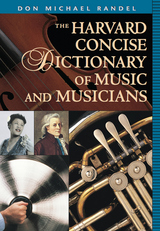
This new compact guide to the history and performance of music is both authoritative and a pleasure to use. With entries drawn and condensed from the widely acclaimed The New Harvard Dictionary of Music and its companion The Harvard Biographical Dictionary of Music, it is a dependable reference for home and classroom and for professional and amateur musicians.
This concise dictionary offers definitions of musical terms; succinct characterizations of the various forms of musical composition; entries that identify individual operas, oratorios, symphonic poems, and other works; illustrated descriptions of instruments; and capsule summaries of the lives and careers of composers, performers, and theorists. Like its distinguished parent volumes, The Harvard Concise Dictionary of Music and Musicians provides information on all periods in music history, with particularly comprehensive coverage of the twentieth century.
Clearly written and based on vast expertise, The Harvard Concise Dictionary of Music and Musicians is an invaluable handbook for everyone who cares about music.

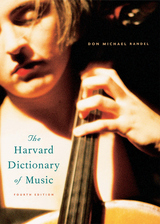
This classic reference work, the best one-volume music dictionary available, has been brought completely up to date in this new edition. Combining authoritative scholarship and lucid, lively prose, the Fourth Edition of The Harvard Dictionary of Music is the essential guide for musicians, students, and everyone who appreciates music.
The Harvard Dictionary of Music has long been admired for its wide range as well as its reliability. This treasure trove includes entries on all the styles and forms in Western music; comprehensive articles on the music of Africa, Asia, Latin America, and the Near East; descriptions of instruments enriched by historical background; and articles that reflect today’s beat, including popular music, jazz, and rock. Throughout this Fourth Edition, existing articles have been fine-tuned and new entries added so that the dictionary fully reflects current music scholarship and recent developments in musical culture.
Encyclopedia-length articles by notable experts alternate with short entries for quick reference, including definitions and identifications of works and instruments. More than 220 drawings and 250 musical examples enhance the text. This is an invaluable book that no music lover can afford to be without.

A classic and invaluable reference work. Soon after its initial publication, the Harvard Dictionary of Music by Willi Apel was firmly established as a standard and essential resource for everyone concerned with music. The product of exceptional scholarship, it was praised as being comprehensive, concise, authoritative, scholarly, and enjoyable. Leopold Stokowski wrote, “I so often consult your dictionary of music, and with such never failing enlightenment, that I must offer you my thanks for your unique book, so profound and so broad in scope… The vast scholarship…is of immeasurable value to the whole world of music.”
For this second edition the dictionary has been thoroughly revised, updated, and substantially enlarged. Apel and eighty-eight other eminent music scholars have contributed new articles and revised old ones completely. The already comprehensive list of accurate definitions has grown measurably and it now even includes nothus, pyiba, and merengue.
In the greatly expanded coverage of ethnomusicology, cumbia—an Afro-Panamanian dance form—and Vietnam are only two of the new entries. Additionally, all the general information about individual countries has been revised and the discussion of both theory and history has been amply increased. Developments of the last two decades are given special attention with particular emphasis on compositional techniques, including electronic music and serial music. Individual compositions, representative of every type from every era, are described. The bibliography following each article, a unique feature of the first edition, has been updated and expanded. There are fifty percent more illustrations than in the first edition, including explicit drawings of instruments, clear music examples, diagrams, charts and a full-page outline of the history of music.
An extensive list of the most important music libraries and collections throughout the world with summaries of their significant musical holdings is a valuable part of the dictionary. The section on historical editions now lists fifty-three collections of music and briefly describes each volume within each collection.
The Harvard Dictionary of Music, Second Edition, Revised and Enlarged, is the result of imaginative, specialized, modern, and reliable music scholarship. Containing nearly 1,000 pages of precise and accessible information on all musical subjects, it offers over fifty percent more material than the first edition. It is essential not only to the scholar of music, the professional performer, and the practicing amateur, but to everyone who has ever anticipated the pleasure of a weekly musical broadcast, purchased a favorite recording, or truly enjoyed a concert.

From Acadians to Zoroastrians-Asians, American Indians, East Indians, West Indians, Europeans, Latin Americans, Afro-Americans, and Mexican Americans—the Harvard Encyclopedia of American Ethnic Groups provides the first comprehensive and systematic review of the many peoples of this country. It should excite all Americans about their nation.
Informative and entertaining, this volume is an indispensable reference work for home, library and office. It establishes a foundation for the burgeoning field of ethnic studies; it will satisfy and stimulate the popular interest in ancestry and heritage. It is a guide to the history, culture, and distinctive characteristics of the more than 100 ethnic groups who live in the United States.
Each ethnic group is described in detail. The origins, history and present situation of the familiar as well as the virtually unknown are presented succinctly and objectively. Not only the immigrants and refugees who came voluntarily but also those already in the New World when the first Europeans arrived, those whose ancestors came involuntarily as slaves, and those who became part of the American population as a result of conquest or purchase and subsequent annexation figure in these pages. The English and the Estonians, the Germans and the Gypsies, the Swedes and the Serbs are interestingly juxtaposed. Even entries about relatively well-known groups offer new material and fresh interpretations. The articles on less well-known groups are the product of intensive research in primary sources; many provide the first scholarly discussion to appear in English. One hundred and twenty American and European contributors have been involved in this effort, writing either on individual groups or on broad themes relating to many.
The group entries are at the heart of the book, but it contains, in addition, a series of thematic essays that illuminate the key facets of ethnicity. Some of these are comparative; some philosophical; some historical; others focus on current policy issues or relate ethnicity to major subjects such as education, religion, and literature. American identity and Americanization, immigration policy and experience, and prejudice and discrimination in U.S. history are discussed at length. Several essays probe the complex interplay between assimilation and pluralism—perhaps the central theme in American history—and the complications of race and religion.
Numerous cross-references and brief identifications will aid the reader with unfamiliar terms and alternative group names. Eighty-seven maps, especially commissioned, show where different groups have originated. Annotated bibliographies contain suggestions for further reading and research. Appendix I, on methods of estimating the size of groups, leads the reader through a maze of conflicting statistics. Appendix II reproduces, in facsimile, hard-to-locate census and immigration materials, beginning with the first published report on the nativities of the population in 1850.

The Harvard Guide has a long and distinguished history in the annals of reference works. First prepared in 1896 by Albert Bushnell Hart and Edward Channing, it was a unique scholarly tool. Revised in 1912 by Hart, Channing, and Frederick Jackson Turner, the Guide carried its entries through 1910 and became the standard text.
In 1954 the Harvard Guide to American History appeared, prepared and edited by members of the History Department of Harvard: Oscar Handlin, Arthur Meier Schlesinger, Samuel Eliot Morison, Frederick Merk, Arthur Meier Schlesinger, Jr., and Paul Herman Buck. A one-volume compendium, the Guide became a classic in historical studies and won a place in every important library—both public and private—of American history.
With its revised republication in 1974, Frank Freidel and Richard K. Showman have made the Guide the most essential reference book for historians. Their work was sponsored by the Charles Warren Center for Studies in American History at Harvard. This thoroughly revised, comprehensive guide to American history reflects the explosive growth in historical publications and materials, and the expanding interests of American historians. About one third of the entries are new. These not only represent the surge of books and articles, but also reflect new areas of history. The brief topical sections in the last edition have grown into a 300-page coverage of economic, social, and intellectual history. Demography, social structure, ethnicity, and the new urban and cultural dimensions of history find a place. Colonial history receives both topical and chronological treatment in an all-inclusive section. United States history since 1759, primarily political and diplomatic, appears in the familiar chronological form.
Enlarged and up-to-date sections cover research methods and material. There are practical suggestions on research, writing, and publication, and extensive citation of finding aids and bibliographies to introduce the user to collections of printed materials, public documents, microform, manuscripts, and archives. The section on care and editing of manuscripts, long standard on the subject, appears unchanged; other sections, such as those on automated data retrieval, quantitative techniques, and oral history, reflect innovations in the historian’s craft. The new Guide has been recast in columnar form to make it easier to locate references and includes cross-reference by pages and sections to facilitate faster use.




Four years in the making, this entirely revised edition of a classic text provides a lucid and erudite review of the state of psychiatry today. Since the publication of the last edition in 1988, remarkable advances have been made in laboratory and clinical psychiatric research; the fourth edition of the Diagnostic and Statistical Manual of Mental Disorders (DSM-IV) has been published; managed care has radically altered the provision of all medical care; and the profession of psychiatry has come to a sophisticated new understanding of the interplay between psychiatric knowledge and issues in the larger society.
All these changes are reflected in the new text. Of particular interest are the masterful and lucid reviews of current knowledge in the neurobiology of mental disorders, in the section on brain and behavior. The section on psychopathology clarifies newly emerging diagnostic categories and offers new insight into addictions, anxiety disorders, and disorders of cognition.
Like its predecessors, The Harvard Guide To Psychiatry focuses throughout on the relationship between the physician and the patient. Its unspoken motto is that the art of psychiatry is as important as the science. For this recognition of what is relevant clinically as well as technically, this book will be an essential reference and support for both the new and the experienced psychiatrist.
This new edition includes up-to-date discussions of:DSM-IVManaged careImprovements in neuroimagingThe increased use of psychoactive drugsRecent advances in molecular biologyResearch on the biology of schizophrenia, depression, anxiety, and addictive disorders

THIS EDITION HAS BEEN REPLACED BY A NEWER 2004 EDITION.
With the publication of The Harvard Guide to Women's Health, women will have access to the combined expertise of physicians from three of the world's most prestigious medical institutions: Harvard Medical School, Massachusetts General Hospital, and Brigham and Women's Hospital. For complete information on women's health concerns, physical and psychological, this A to Z reference book will be the definitive resource.







In the early years of the twentieth century, President Charles William Eliot fought to keep Harvard from becoming a refuge for “the stupid sons of the rich.” A. Lawrence Lowell, a tireless builder, gave the modern University its physical structure. James Conant helped forge a wartime alliance of universities, industry, and government that sustained an astonishingly prosperous postwar epoch.
Their successors saw Harvard through the turbulent 1960s and 1970s, adapting the University’s programs and policies to the needs of a rapidly changing society, strengthening longstanding bonds with international institutions, and creating new ties to the cultures of Japan, China, and other Eastern nations.
In words and pictures, Harvard Observed documents the shaping of the singular institution that poet and essayist David McCord, a former Harvard Alumni Bulletin editor, called “the haven of scholars and teachers, the laboratory of scientists and technicians, the church of the theologian, the crow’s nest of the visionary, the courtroom of the law, the forum of the public servant. It is gallery, concert hall, and stage; the out-patient ward for the medical student, counting-house of the businessman, classroom of the nation, lecture platform for the visitor, library to the world; and…‘on of the great achievements of American democracy.’”
Depicting the evolution of twentieth-century Harvard in the broader context of national and world events, Harvard Observed has much to say and show about the academic rites, intellectual arguments, sexual mores, fads, and folklore that became touchstones for successive generations of Harvardians. Photographs, drawings, and paintings from the University’s vast archival collections and museums add a compelling visual dimension.

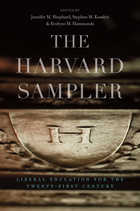
From Harvard University, one of the world’s preeminent institutions of
liberal education, comes a collection of essays sampling topics at the forefront of academia in the twenty-first century. Written by faculty members at the cutting edge of their fields, including such luminaries as Steven Pinker, Laurel Thatcher Ulrich, and Harry R. Lewis, these essays offer a clear and accessible overview of disciplines that are shaping the culture, and even the world.
The authors, among the most respected members of Harvard’s faculty, invite readers to explore subjects as diverse as religious literacy and Islam, liberty and security in cyberspace, medical science and epidemiology, energy resources, evolution, morality, human rights, global history, the dark side of the American Revolution, American literature and the environment, interracial literature, and the human mind. They summarize key developments in their fields in ways that will both entertain and edify those who seek an education beyond the confines of the classroom.
It is sometimes said that youth is wasted on the young. It could also be said that college, too often, is wasted on college students—that only after graduating does a former student come to appreciate learning. To those wishing to revisit the college classroom—as well as to those who never had the opportunity in the first place—this book gives a taste of the modern course at Harvard. The essays are stimulating and informative, and the annotated bibliographies accompanying each chapter provide invaluable guidance to the life-long learner who wants to pursue these fascinating topics in depth.



This volume celebrates 100 years of Harvard Studies in Classical Philology. It contains essays by Harvard faculty, emeriti, currently enrolled graduate students, and most recent Ph.D.s. It displays the range and diversity of the study of the Classics at Harvard at the beginning of the twenty-first century.
Volume 100 includes: E. Badian, “Darius III”; D. R. Shackleton Bailey, “On Statius’ Thebaid”; Brian W. Breed, “Silenus and the Imago Vocis in Eclogue 6”; Wendell Clausen, “Propertius 2.32.35–36”; Kathleen Coleman, “Missio at Halicarnassus”; Stamatia Dova, “Who Is μακάρτατος in the Odyssey?”; Casey Dué, “Tragic History and Barbarian Speech in Sallust’s Jugurtha”; John Duffy and Dimiter Angelov, “Observations on a Byzantine Manuscript in Harvard College Library”; Mary Ebbott, “The List of the War Dead in Aeschylus’ Persians”; Gloria Ferrari, “The Ilioupersis in Athens”; José González, “Musai Hypophetores: Apollonius of Rhodes on Inspiration and Interpretation”; Albert Henrichs, “Drama and Dromena: Bloodshed, Violence, and Sacrificial Metaphor in Euripides”; Alexander Hollmann, “Epos as Authoritative Speech in Herodotos’ Histories”; Thomas E. Jenkins, “The Writing in (and of) Ovid’s Byblis Episode”; Christopher Jones, “Nero Speaking”; Prudence Jones, “Juvenal, the Niphates, and Trajan’s Column (Satire 6.407–412)”; Leah J. Kronenberg, “The Poet’s Fiction: Virgil’s Praise of the Farmer, Philosopher, and Poet at the End of Georgics 2”; Olga Levaniouk, “Aithôn, Aithon, and Odysseus”; Nino Luraghi, “Author and Audience in Thucydides’ Archaeology. Some Reflections”; Gregory Nagy, “‘Dream of a Shade’: Refractions of Epic Vision in Pindar’s Pythian 8 and Aeschylus’ Seven against Thebes”; Corinne Ondine Pache, “War Games: Odysseus at Troy”; David Petrain, “Hylas and Silva: Etymological Wordplay in Propertius 1.20”; Timothy Power, “The Parthenoi of Bacchylides 13”; Eric Robinson, “Democracy in Syracuse, 466–412 B.C.”; Charles Segal, “The Oracles of Sophocles’ Trachiniae: Convergence or Confusion?”; Zeph Stewart, “Plautus’ Amphitruo: Three Problems”; Sarolta A. Takàcs, “Politics and Religion in the Bacchanalian Affair of 186 B.C.E.”; R. J. Tarrant, “The Soldier in the Garden and Other Intruders in Ovid’s Metamorphoses”; Richard F. Thomas, “A Trope by Any Other Name: ‘Polysemy,’ Ambiguity, and Significatio in Virgil”; Michael A. Tueller, “Well-Read Heroes Quoting the Aetia in Aeneid 8”; and Calvert Watkins, “A Distant Anatolian Echo in Pindar: The Origin of the Aegis Again.”


























READERS
Browse our collection.
PUBLISHERS
See BiblioVault's publisher services.
STUDENT SERVICES
Files for college accessibility offices.
UChicago Accessibility Resources
home | accessibility | search | about | contact us
BiblioVault ® 2001 - 2025
The University of Chicago Press




